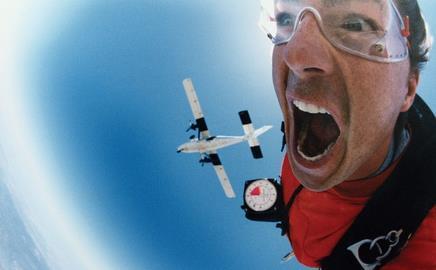Well, that was the project team’s traditional attitude to the client once its building was finished. The Soft Landings framework straps them together until all the problems are resolved
There is a prevailing assumption that new buildings perform exactly as they were designed. It is taken for granted that from the day the occupants move in, everything will be working as intended when the details were drawn up months, if not years, before. But as most designers know, theory and practice rarely coincide.
Built environment consultancy BSRIA and the Usable ��ɫ����TVs Trust have decided to tackle this problem. The tool they have invented for the purpose is the Soft Landings framework, which aims to make moving into a building hitch-free and ultimately to improve the long-term performance of buildings, from the comfort of the occupants to the amount of energy used.
Practical completion always used to be the stage when the professional team disbanded, with its members racing each other to get off site first. Soft Landings, conceived by Mark Way when he was chairman of architect RMJM and trialled when constructing the centre for mathematical sciences at the University of Cambridge, offers a different approach. The initiative provides a framework to keep the professional team together after practical completion, providing a period of “hand holding” during which the client and occupants can become accustomed to their new building.
How does it work?
The Soft Landings framework is a set of procedures and exemplary checklists that the design team can follow – it’s not licensed, so users are free to use and adapt it as they like. The attraction for clients is that by going through this process they get a building that is ready to go operational straight away. For the design team it means fewer recalls and the opportunity to learn lessons that they can incorporate into future projects.
According to Roderic Bunn, project manager at BSRIA: “We know that few buildings are truly operationally ready at handover, and we also know that energy consumption is often far higher than anticipated. The Soft Landings framework provides a simple mechanism by which project teams can remain involved after practical completion in order to identify emerging problems, resolve causes of energy wastage and help occupants gain full control over the building’s environmental systems”.
Handover is the crucial stage of Soft Landings, as it offers the opportunity to fine-tune and debug the building’s systems and explain to facilities managers and occupants how to get the best out of their new environment. It can be especially valuable in buildings where, for example, low-energy passive or mixed-mode ventilation systems are used as these can involve greater occupant interaction and fine-tuning than a fully air-conditioned office. In practice it means having members of the original team on site for a period – typically up to two days a week for the first two months – as the occupants move in.
However, along with the initial period of aftercare, the framework allows for a programme of post-occupancy evaluation that can run for up to three years. The project team can use this to benchmark and improve the building’s performance and sustainability over the long term.
According to Rab Bennetts, director of architect Bennetts Associates, closing the loop from design, construction, operation and feedback and into design again is essential to provide better buildings and a more effective service to clients.
The big question, of course, is cost. Bunn suggests initially setting aside about 0.1% of the contract value. “It depends on what you’re aiming to achieve. If you’re planning to do an energy audit of an existing building to benchmark against and full post-occupancy surveys, then the costs will be higher but a lot of it just involves a different approach rather than additional meetings and time.”
Bunn also argues there is a strong case for architects and consultants not to charge full rates for additional time. “They will benefit from the work, particularly when it comes to the lessons learned and this should be taken into account”.
These days, developers and project teams are looking ever harder for a competitive edge. Soft Landings might be just what they need.
Five steps to a soft landing
Inception and briefing A clear brief is essential. Roles and responsibilities among the client and construction team need to be spelled out to show up any gaps, and lessons from previous projects need to be shared openly. To ensure the design meets operational needs, the facilities management team should be involved at the early stages of design and the design team needs to agree how to measure performance in use.
Design development and review It is important to design for buildability, usability and manageability. Designers need to consider budgets and the technical expertise of the occupier. Peer reviews by independent experts can pinpoint problems, and design reviews should include people with different jobs and levels of seniority. The contract documentation needs to reflect the Soft Landings approach.
Pre-handover The main purpose of this stage is to make sure that the building is ready for operations. Problems that occur after handover can often be tracked back to insufficient understanding by the facilities staff of technical systems.
Initial aftercare This period is intended to help occupiers understand their building and facilities staff to operate the systems. The aftercare team’s workplace must be in a visible area and occupiers must be told of the purpose of their being there. They also need to undertake walkabouts to observe occupation and head off emerging problems.
Extended aftercare This involves periodic inspections over three years by the aftercare team to help users and operators to get the best out of the building. This may include fine-tuning systems to optimise energy efficiency and to take account of occupant feedback. In years two and three these become less frequent and include a occupant satisfaction survey which is used to make comparisons with other projects.
Postscript
Original print headline: Goodbye and good luck


























No comments yet